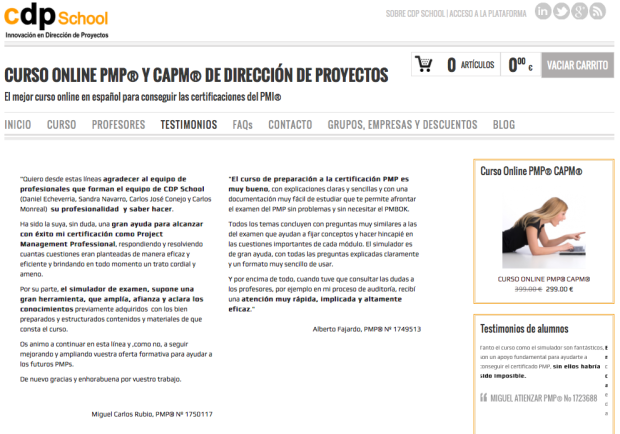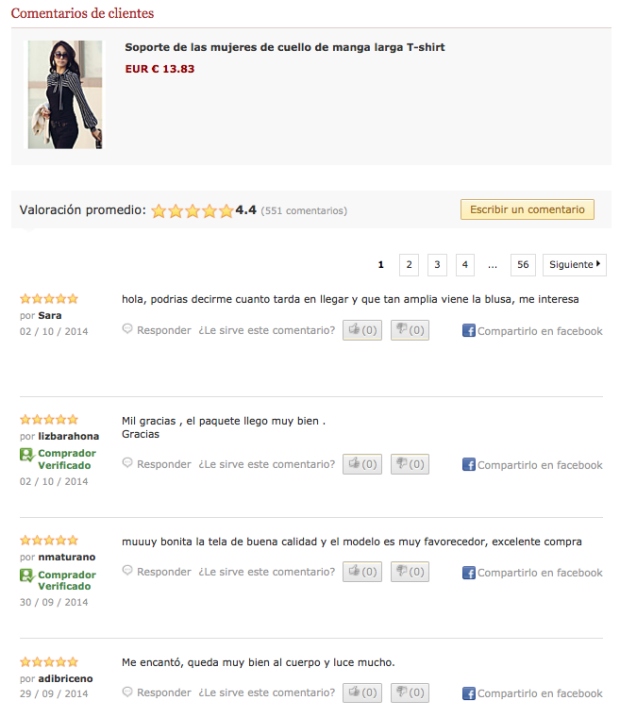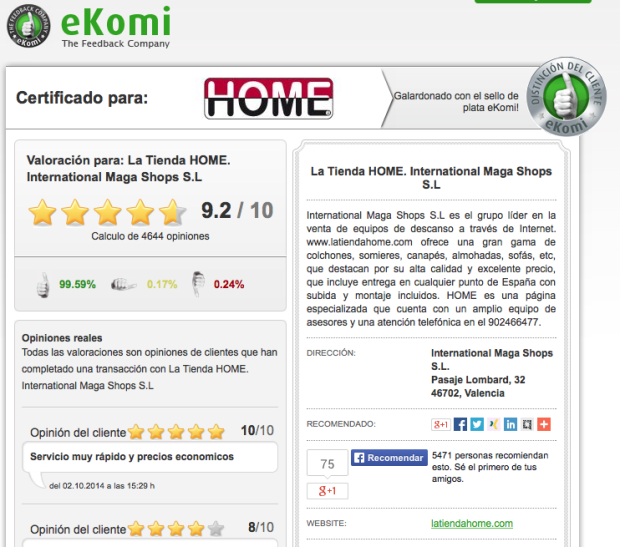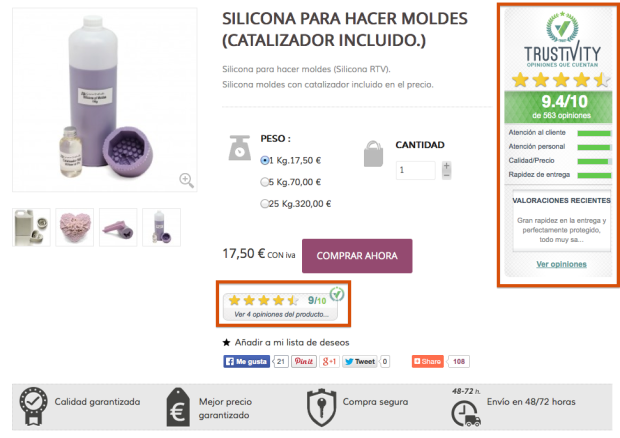There are a vast number of things you can do to increase sales in your e-commerce. Today we will focus on one that is simple to implement and that has an enormous influence on the user’s buying decision: the recommendations.
Social proof
In a previous post I talked about the fact that it gives us more confidence stores in which there’s a lot of people looking in and paying than in an empty store, that if we stop in front of 2 restaurants, a crammed one and a totally empty one, it is more probable that we enter the one where there’s more people.
This human behavior is known as Social Proof or informational social influence and it defines that behavior for which people assume that other people’s actions reflect a correct behavior in a specific situation. That is to say, if others before me had already taken that decision and are happy, I consider it an appropriate choice and I repeat it. This helps the client to reduce his anxiety level in the choosing process.
Paradox of choice
The paradox of choice (Barry Schwartz, 2004) explains that having a great number of choices doesn’t make us happier, but quite the contrary. Searching for a hotel for last summer’s holiday I felt it myself. I spent hours and hours browsing through comparators, hotel web sites,…and I felt the frustration and anxiety that making a choice produces.
Even once the decision was taken, it also generates in the user a feeling of guilt in case the discarded options could have been more appropriate…
As an example of this kind of situation would be booking ((my frustration source last summer). After telling it where and when I was leaving, it told me that I had more than 4.000 accommodations to choose from! Oh mother, the first sweat drop began to roll down my forehead… choosing is going to be a titanic job! I spent a lot of time filtering, looking, checking, discarding until, hours later, bored and feeling that I had lost my valuable time, I left the site… (By the way, I ended up going on vacation with airbnb, highly recommendable!)
This frustration process that we generate in users, giving him/her so many options to choose from is something dangerous when facing conversion. During this whole process I would have paid to have a magical pop-up (despite hating them) that told me: “Sandra, stop searching. We know what you want and THIS is the hotel you are looking for. Click here and start enjoying!” Maybe this is a kind of science-fiction web functionality (if the recommendation is not made up) but it is something to think about…
One of the keys to break this frustration circle and to help reinforce the user’s decisions are opinions, recommendations, and testimonies. Because as we said before, I’m going to feel that I have chosen the right product if I see that others have taken the decision before I did and I can also read their opinion…
Depending on the type, size and budget of your e-commerce, the implementation of comments, recommendations, and testimonies could be performed in different ways.
Are you still small? Be personal.
Contact your clients (the “few” or the “many” you have) and ask them for their sincere opinion and their approval to publish it on your store. This is something we try to take advantage of as much as we can in CDP School and I can guarantee that it does more than half of our job for us when it comes to generating contact forms and convincing our clients to purchase our course.
In CDP School, we ask the students that get their certificate thanks to our course to write a sincere recommendation about their experience. The result is unbeatable. The students that just got their certificate thanks to us (or your clients that are happy after receiving the product they bought in your store), are extremely proud to tell the world and to tell others who are in the same circumstances about their experience.
For this size of e-commerce, you could also use “Comment about this product” or “Be the first to comment” that your CMS has by default but if you don’t have a large volume of clients you will have most of your products (if not all of them) empty, which produces a rejection effect on the user (it is the empty restaurant we were talking about before).
If you start off with 15-20 recommendations well created and randomly appearing in strategic places of your e-commerce, it is more than enough. If it grows, we will use another kind of tool, but something as simple and manual like this can help you give your online business a push.
Are you starting to have more clients and they want to comment?
Encourage them to leave a comment and show it in the products card. Implement a unit that allows you to collect and take advantage of those comments the best way possible. The CMS (Prestashop, Woocommerce, Magento, etc…) usually have a basic function by default but not attractive to encourage the users to pounce on giving their opinions.
There are additional units much more interesting. A good example would be YOPTO that allows users to leave a comment, share it in social networks and takes care of asking each new client to leave his comment. Yopto was one of the keys in my buying experience to make the decision to buy my first dress online in LightInTheBox. Seeing the comments of the clients that have bought it before me (and that solved my greatest doubts: delivery time – real -, seriousness, products quality, etc.) was important.
High volume of clients?
If you already have an interesting volume of clients, you can use the automated tools that gather the online store and/or specific products opinions and valuations. Some of these tools: eKomi, Trustedshops, Trustivity, Trustpilot,… and many more!
One of the positive things about this kind of tool is that they generate more trust in users given that it is a third party who asks for the opinion and publishes it. An interesting issue for store owners is that these platforms usually act as an intermediary in case you receive a complaint. Before publishing it, they mediate in the situation so user and seller solve in a friendly way the conflict. In case of solving it, if both agree, the comment won’t be published. This is a great concern for e-commerce owners, who feel they are losing control if a mediator is responsible for administering their store’s opinions…
Opinions are gathered and consulted in the hired application site (where your store has its own site: https://www.ekomi.es/testimonios-ecommerceX.html, for example). The full contents are not showed in your web.
What does show in your web is the obtained valuation, the last comment and the site’s link where you can see all comments. In the next product card you can see the 2 sites that show the information gathered by Trustivity, in this case.
In the case of my recent experience with “Booking”, despite having Trustivity and users’ opinions, the frustration caused by the paradox of choice exceeded the rest of virtues the page could have.
To finish, I would like that, whichever the way, method or tool you choose or the size of your ecommerce, you remember this key principle:
Show new clients that others have already chosen you before and that they are happy. This way you will reduce the frenzy that choosing produces, either among your store and others from the competition, or among products of your own store. Doing this, and if the rest of variables of your ecommerce don’t resoundingly fail, you will get to improve gradually your conversion rates.




